The XV National Conference of Music Librarians was held on November 28-30 at the Karol Lipinski Academy of Music in Wroclaw. In the Music Libraries session, Ewa Lukasik, Ph.D., presented information about the DARIAH-PL MIR WG group, the projects we are implementing and the tools we are developing, whose functionality fit the conference theme “Music […]
The XV National Conference of Music Librarians was held on November 28-30 at the Karol Lipinski Academy of Music in Wroclaw. In the Music Libraries session, Ewa Lukasik, Ph.D., presented information about the DARIAH-PL MIR WG group, the projects we are implementing and the tools we are developing, whose functionality fit the conference theme “Music Library – an idea tuned to the time”. The presentation included solutions for digital music libraries, such as OMR (Optical Music Recognition) systems, and transcription of music recordings into musical notation.
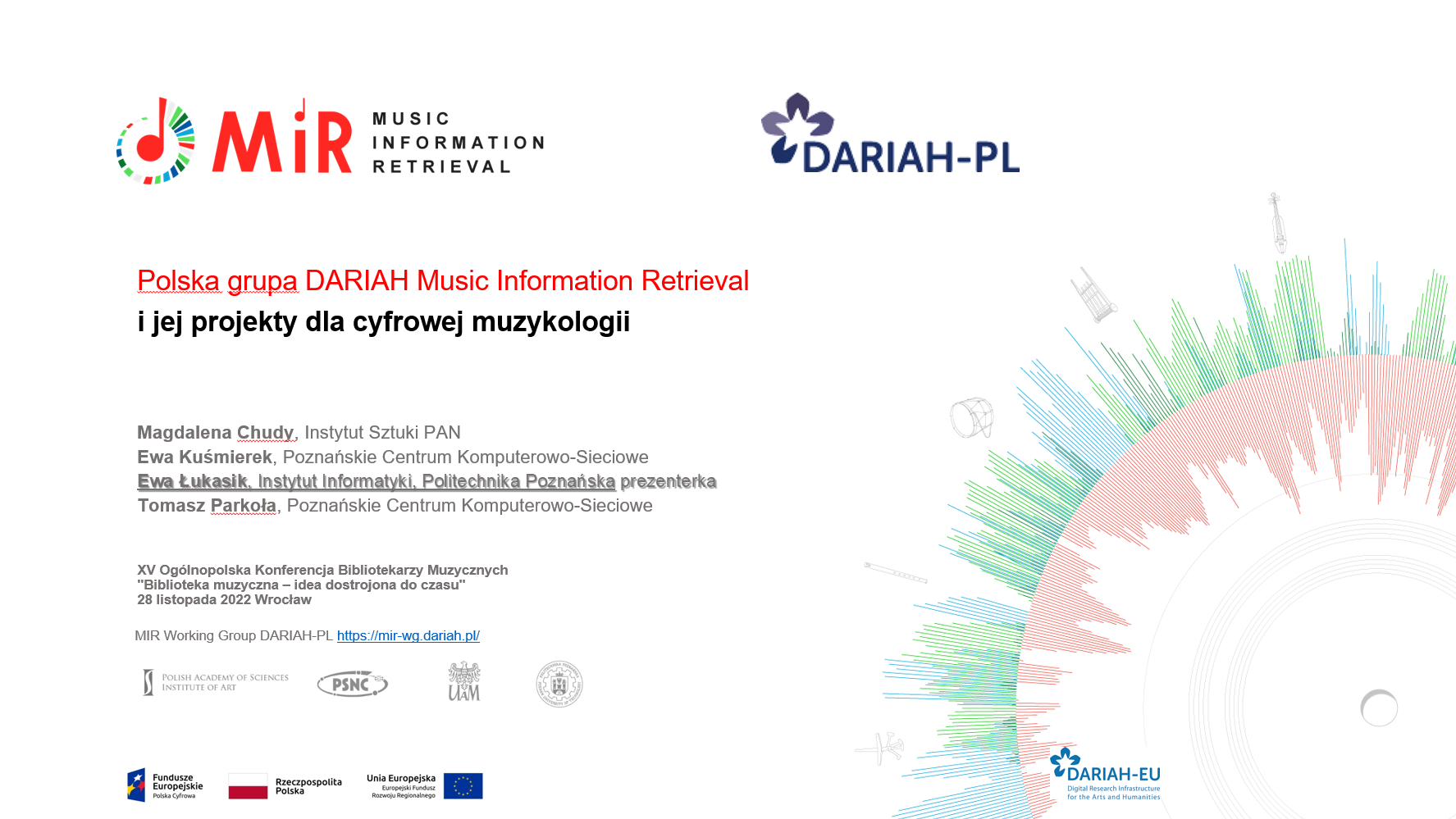
DARIAH-PL is a project whose objective is to build a research infrastructure for digital arts and humanities, including ethnomusicology. As part of this project, we are developing a number of useful tools for processing musical content, i.e., musical notations and recordings. These tools include tools for automatic transcription of single-voice recordings and their representation in […]
DARIAH-PL is a project whose objective is to build a research infrastructure for digital arts and humanities, including ethnomusicology. As part of this project, we are developing a number of useful tools for processing musical content, i.e., musical notations and recordings.
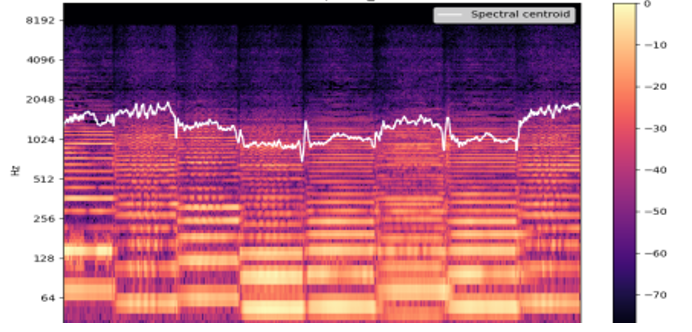
These tools include tools for automatic transcription of single-voice recordings and their representation in the form of musical notation, and automatic interpretation of musical notation scans using artificial intelligence methods (neural networks). In both cases, a transcript of the musical piece is obtained in one of several formats designed for “machine” representation of music – MEI, MusicXML, ABC, MIDI or EsAC, which allows for further processing and playback of the song using a number of music programs.
A tool for analyzing music recordings is also being developed. It determines the values of spectral parameters responsible for the impression of timbre, and visualizes the similarities of selected sounds based on various parameters characterizing their timbre. The timbre parameters can be used to identify the musical genre, the mood of the music, the type of musical instrument, human voices, etc. Work is also advanced on a prototype of a neural network-based system for generating music with different emotional overtones, which could, for example, assist game developers in preparing a music track.
The year-long FolkArtiNet project, whose objective was to identify technological solutions that could support folk music ensembles in their artistic activities, has come to an end. It was a very engaging and interesting project for us. Locations of ensembles participating in the project Here are some conclusions from the analysis of the data that we […]
The year-long FolkArtiNet project, whose objective was to identify technological solutions that could support folk music ensembles in their artistic activities, has come to an end. It was a very engaging and interesting project for us.
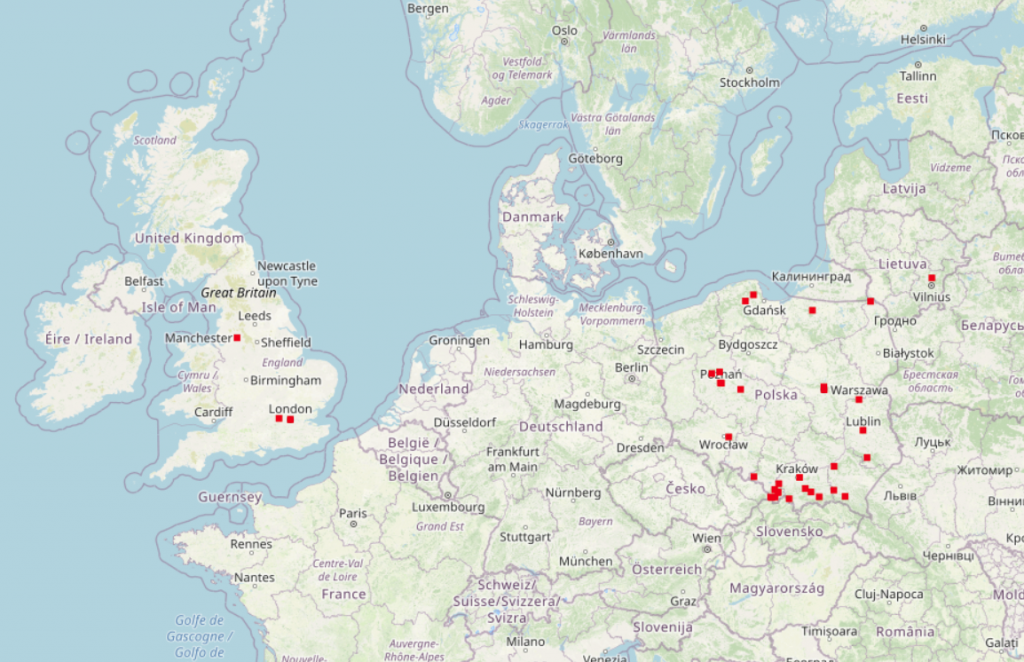
Locations of ensembles participating in the project
Here are some conclusions from the analysis of the data that we have collected:
FolkArtiNet will be featured at the next year’s DARIAH Annual Event, which will take place May 31 – June 03, 2022.
The kick-off meeting for FBC TeNe took place on March 9 and has been attended by partners from Poznan Supercomputing and Networking Center – leader of the project consortium, Institute of Art of the Polish Academy of Sciences and Poznan University of Technology. The meeting was held as a videoconference due to the pandemic. One […]
The kick-off meeting for FBC TeNe took place on March 9 and has been attended by partners from Poznan Supercomputing and Networking Center – leader of the project consortium, Institute of Art of the Polish Academy of Sciences and Poznan University of Technology. The meeting was held as a videoconference due to the pandemic.
One of the elements of the agenda was presentation of an engineering project supervised by dr. Ewa Łukasik at the Institute of Computer Science of the Poznan University of Technology, related to OMR technology. Three students – Mateusz Kałamoniak, Zuzanna Piniarska and Michał Subocz – implemented a prototype of a system converting staff notation into symbolic representation, based on deep neural networks. Zuzanna Piniarska and Mateusz Kałamoniak participated in the meeting and presented stages of the conversion process, training sets, challenges they encountered and directions of the future system development.
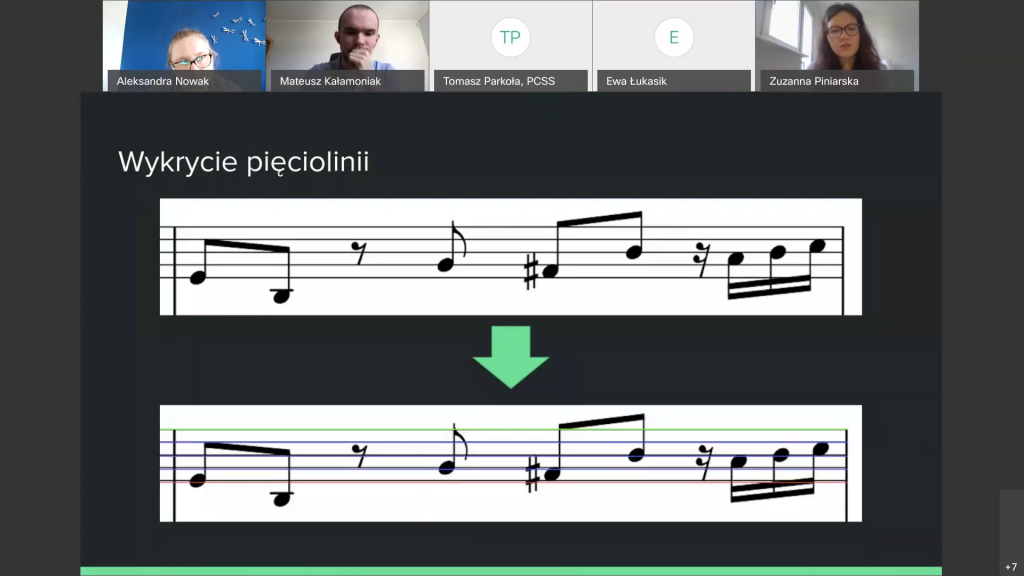
OMR is one of the research areas addressed in FBC TeNe project. Tools that will be implemented as a result, will be used to generate symbolic representation of staff content
available in FBC and to make music content based indexing, search and filtering possible.
One more of our project proposals has been qualified for financing. FBC-TeNe has an objective to increase availability of digital resources of Polish cultural and scientific institutions by extending Digital Libraries Federation (FBC, https://fbc.pionier.net.pl/) functionality with content-based search. Until now content search in FBC was based only on metadata. By generating digital resource representation that […]
One more of our project proposals has been qualified for financing. FBC-TeNe has an objective to increase availability of digital resources of Polish cultural and scientific institutions by extending Digital Libraries Federation (FBC, https://fbc.pionier.net.pl/) functionality with content-based search.

Until now content search in FBC was based only on metadata. By generating digital resource representation that can be indexed we will be able to offer content-based search. That includes music content whose symbolic representation will be obtained with Optical Music Recognition methods. Such a representation will enable new ways of searching for digital music resources.
Verification and evaluation of project applications submitted under the Operational Programme Intelligent Development 2014-2020 Action 4.2 4/4.2/2020 has been completed and DARIAH-PL Digital Research Infrastructure for Arts and Humanities project has been selected for funding. The objective of the project is to build an infrastructure for research in a wide range of areas in arts […]
Verification and evaluation of project applications submitted under the Operational Programme Intelligent Development 2014-2020 Action 4.2 4/4.2/2020 has been completed and DARIAH-PL Digital Research Infrastructure for Arts and Humanities project has been selected for funding.

The objective of the project is to build an infrastructure for research in a wide range of areas in arts and humanities, and for supporting research results applications in various branches of industry. The MIR WG member institutions are also members of the project consortium. Our objective is to develop machine learning based methods and algorithms for data and knowledge explorations in the fields of music, especially Polish traditional music.
One of the streams of the annual DARIAH Theme funding for 2020 was ‘Arts Exchanges’ with the goal to “… to embark on collaborative projects with artists and grow our understanding of the infrastructural requirements of this community with regards to the technologies they use”. In our proposal “Folk music groups: their artistic practice and […]
One of the streams of the annual DARIAH Theme funding for 2020 was ‘Arts Exchanges’ with the goal to “… to embark on collaborative projects with artists and grow our understanding of the infrastructural requirements of this community with regards to the technologies they use”.
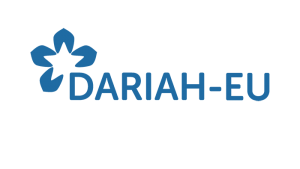
In our proposal “Folk music groups: their artistic practice and infrastructural needs in the COVID-19 era and beyond” we have planned cooperation with folk music artist groups with an objective to identify infrastructural requirements of this community in the COVID-19 era and beyond. We plan to investigate, understand and determine whether currently available tools and infrastructures can address the requirements or whether new tools and services should be developed.
The project has started on December 1, 2020 and will last 12 months.
The prototype of our ethnomusicological research environment was presented during ACM/IEEE Joint Conference on Digital Libraries (JCDL). In the paper entitled „Digital Library Adaptation for Traditional Music and Content-Based Research: Polish Sound Archives and dLibra” we have presented our motivation for building music research support environment, a number of issues and challenges we have encountered […]
The prototype of our ethnomusicological research environment was presented during ACM/IEEE Joint Conference on Digital Libraries (JCDL). In the paper entitled „Digital Library Adaptation for Traditional Music and Content-Based Research: Polish Sound Archives and dLibra” we have presented our motivation for building music research support environment, a number of issues and challenges we have encountered in the process, the environment concept, building stages that have already been completed and plans for its further development.
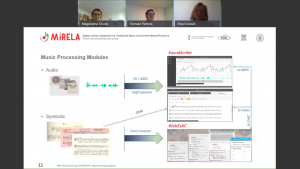
JCDL is a major international forum focusing on digital libraries and associated technical, practical, and social issues. This year the conference took place in August, 1-5 in a virtual mode. During the Digital Libraries -3 session we have presented details on how the dLibra Digital Library Framework was adapted for traditional music content and integration with external music processing tools. The presentation was divided into three sections covering the current state of Polish sound archives in the context of existing music digital library systems (MDLs), dLibra Digital Library Framework and adaptations that have been applied to better serve music and music related content, and two web-based music processing modules, SoundScribe and WebEsAC.
Last year we had an opportunity to introduce an idea of music information research environment based on Polish traditional music archive and digital library software dLibra to MIR community at the 5th DLfM in Paris. Since then the idea has materialized in the form of MIRELA – Music Information Environment with dLibrA whose prototype will […]
Last year we had an opportunity to introduce an idea of music information research environment based on Polish traditional music archive and digital library software dLibra to MIR community at the 5th DLfM in Paris. Since then the idea has materialized in the form of MIRELA – Music Information Environment with dLibrA whose prototype will be presented at the 6th DLfM in Hague.
The presentation will cover the prototype content repository integrated with music processing modules and results of tests conducted with a set of musical samples and related multimodal data from the Institute of Art of the Polish Academy of Sciences’ digitized phonographic archives of Polish traditional music.
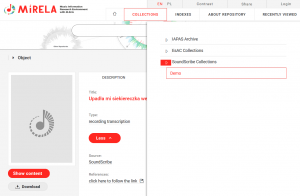
The demo version of MIERLA repository has been open to public at https://mir-wg.dariah.pl/repo/dlibra. It contains a selection of recordings from IAPAS’ and exemplary outputs produced by WebEsAC and SoundScribe – two music processing modules integrated with dLibra. Due to its prototype status the repository is currently available in read-only mode.
WebEsAC 2.0 and SoundScribe, applications implemented as a part of MIR virtual research environment for scholars working on various aspects of traditional music, will be presented during DARIAH Annual Event 2019. This year conference will take place on May 15-17 in Warsaw and will concentrate on issues related to the nature of data collected by […]
WebEsAC 2.0 and SoundScribe, applications implemented as a part of MIR virtual research environment for scholars working on various aspects of traditional music, will be presented during DARIAH Annual Event 2019. This year conference will take place on May 15-17 in Warsaw and will concentrate on issues related to the nature of data collected by humanists.
As a MIR Working Group, we will have an opportunity to present progress on developing virtual research environment for musicologists. The MIR virtual environment concept will be introduced during plenary session „Invited ignite talks” with a more detailed presentation given during “Technical Solutions” session.
The starting point for the environment was MIR content repository. The subsequent steps included development of music processing tools. WebEsAC, which offers an online access to a database containing symbolic representation of tunes in EsAC format, was extended with functionality to manage user access and rights, validate EsAC records, extract scale, convert melodic line into a sequence of intervals and calculate various statistics. SoundScribe can transcribe melody from an audio file with pYIN algorithm. The predominant melody of an audio recording is identified and converted into MIDI data and symbolic music notation.
